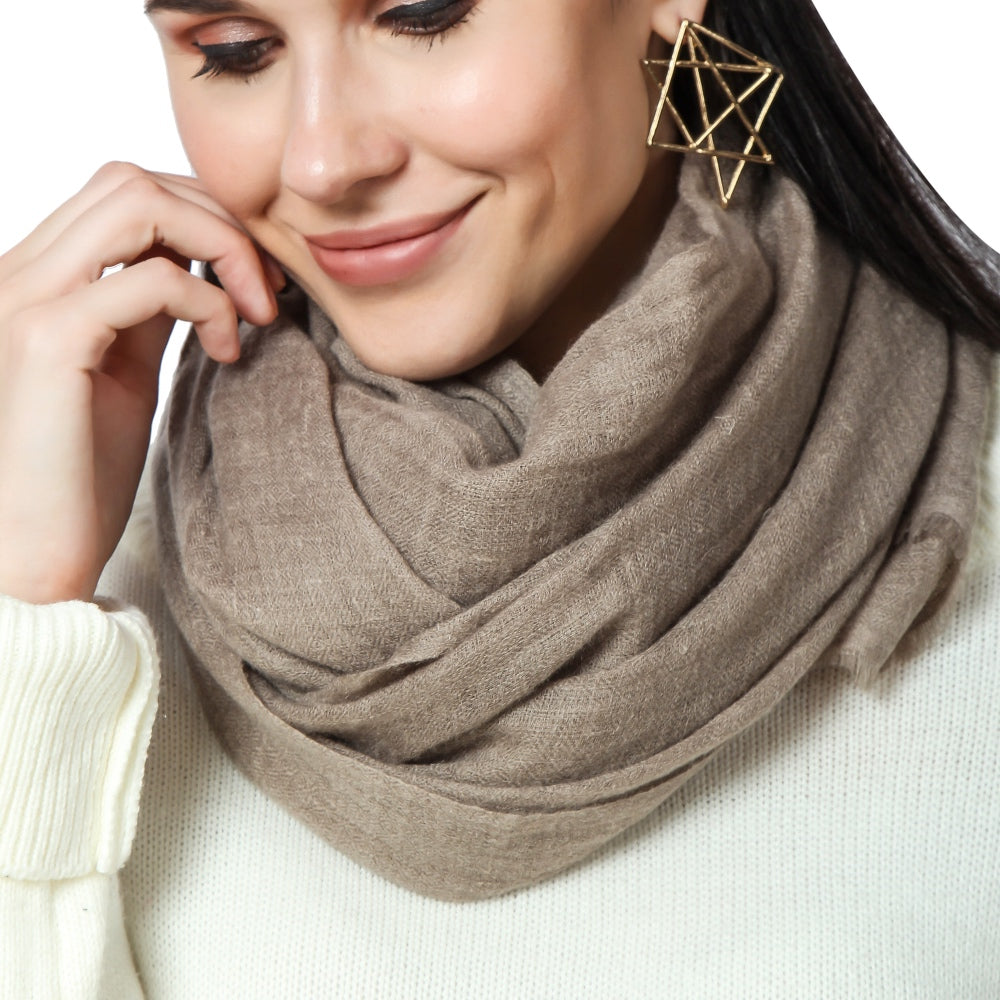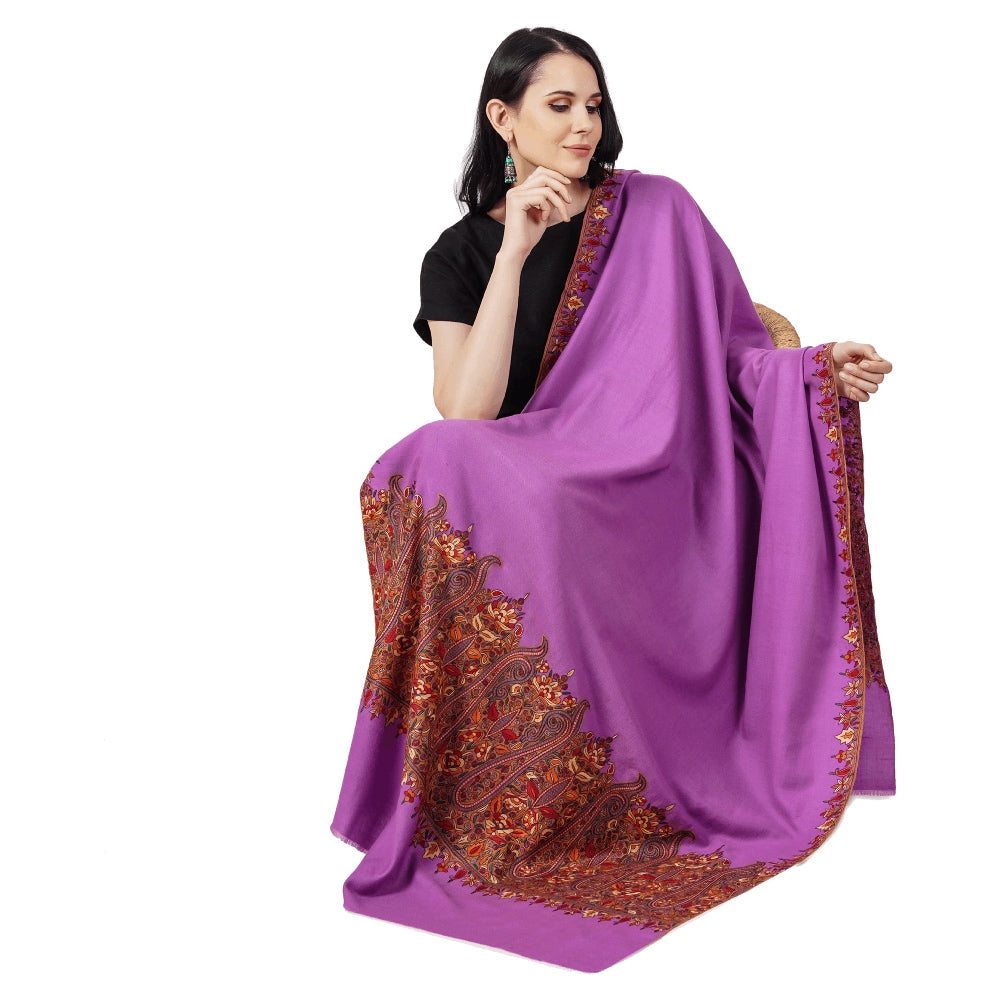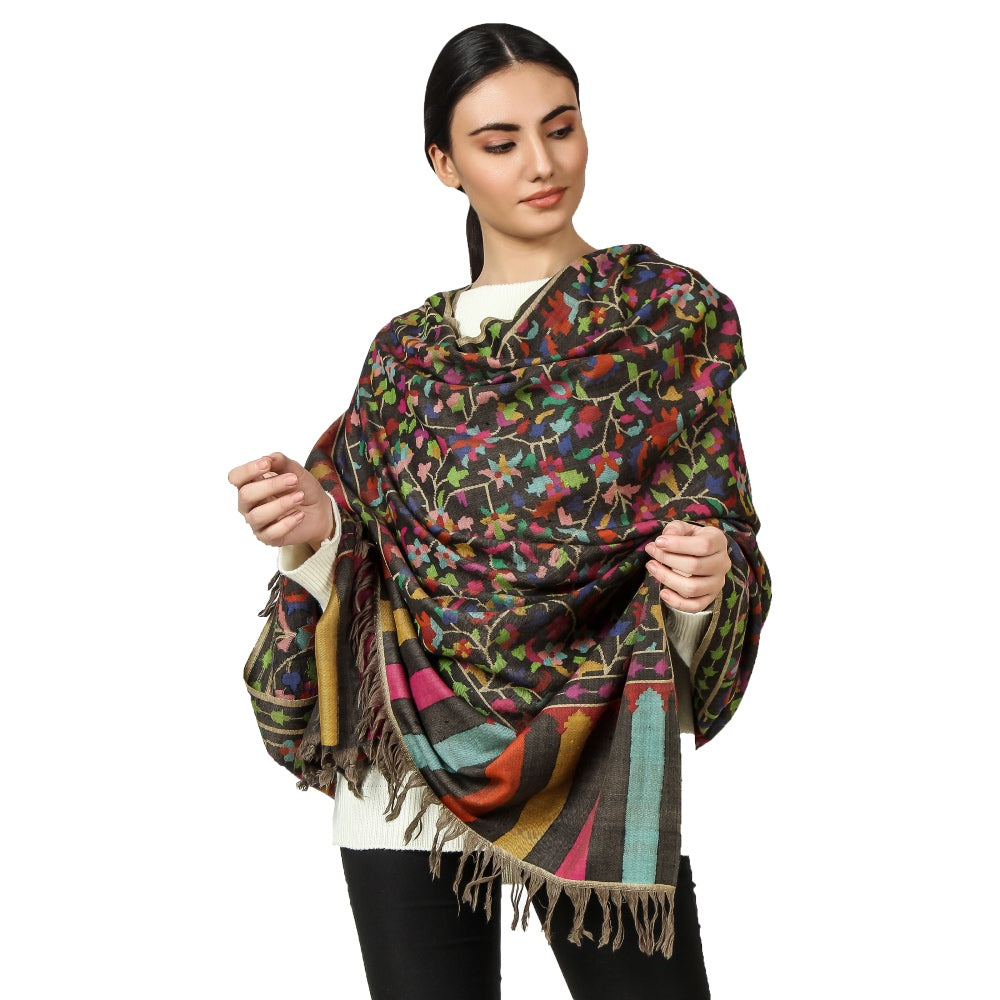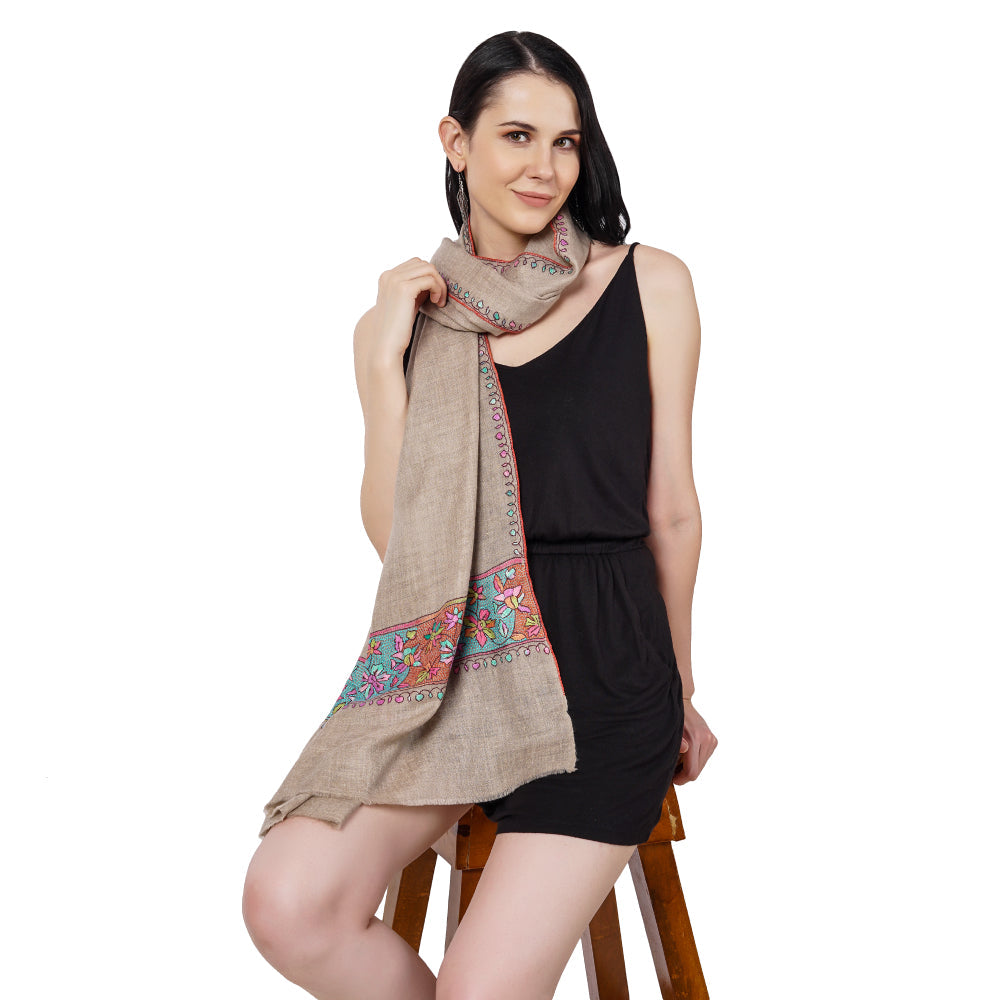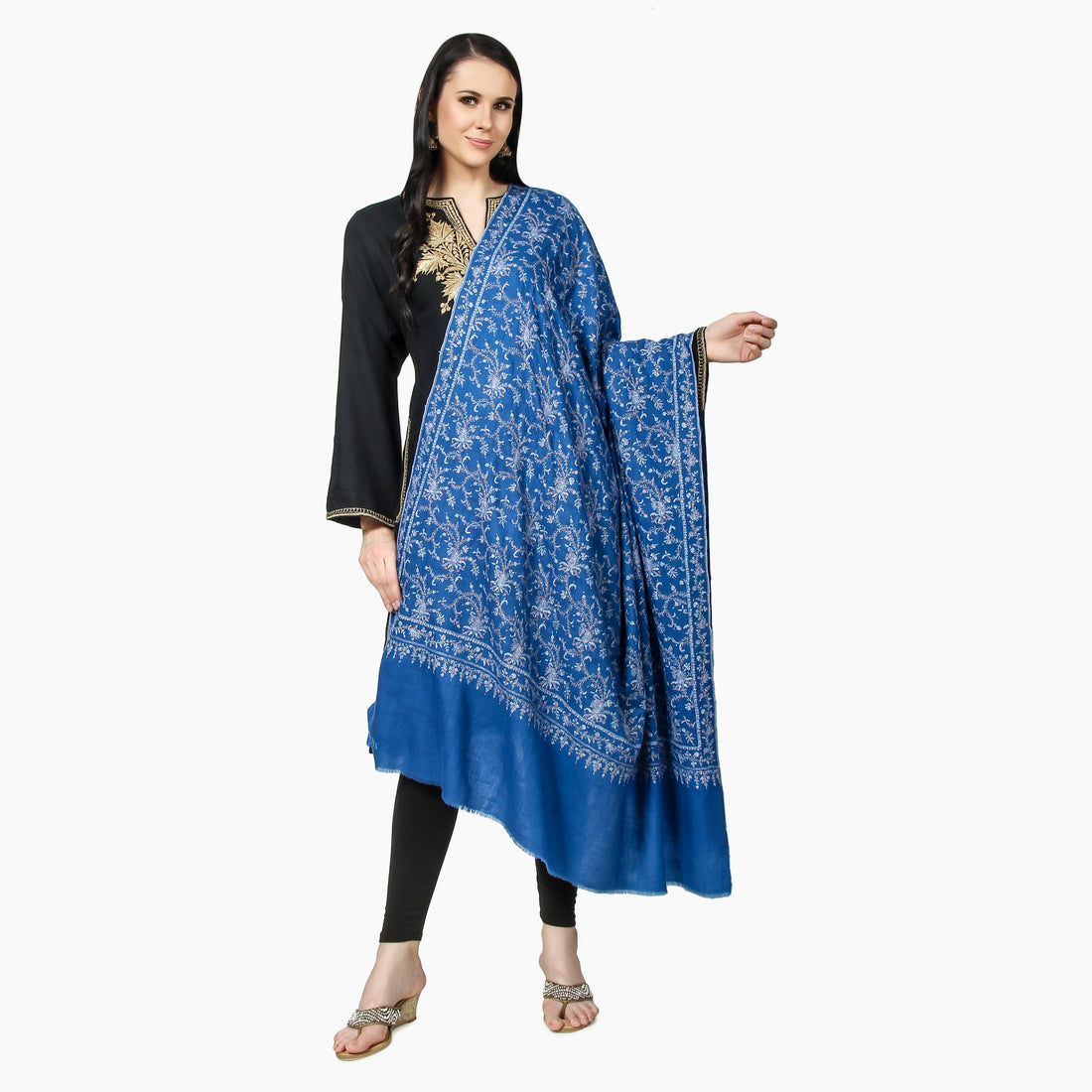
Adorn Any Occasion with Pashmina Shawls
Share
Pashmina shawls, also known as "Cashmere shawls," are a luxurious and lightweight accessory that can be worn on any occasion. They are made from the hair of the Himalayan mountain goat known as Changthangi Goat. The wool is extracted by combing the underbelly of the goats to obtain soft, fluffy wool fibers, which are then woven into Pashmina Shawls. The shawls are famous for their softness, warmth, and durability, making them a popular choice among those who value comfort and style.
The purpose of this article is to provide readers with an in-depth understanding of Pashmina Shawls. The article will cover the history and significance of the shawls in the fashion industry, the different occasions they can be worn, and the various ways they can be styled. Additionally, the article will provide tips on how to care for Pashmina Shawls to ensure they remain in excellent condition. By the end of the article, readers will have a comprehensive understanding of Pashmina Shawls and will be able to incorporate them into their wardrobes with confidence.
Brief history of Pashmina Shawls

The legacy of Pashmina Shawls dates back to 15th Century, the ruler of Kashmir Sultan Zain Ul Abidin introduced this art in Kashmir. The shawls gained popularity in the 16th century when they were introduced to the Mughal emperors of India. The Mughal emperors were so enamored with the shawls that they began to import them from Kashmir, a region in the northern part of India. During the 18th century, Pashmina Shawls became a fashion staple in Europe, and since then, they have remained a popular accessory for fashion-conscious individuals around the world.
Also read: A Journey through time: The History of Pashmina Shawls
Importance of Pashmina Shawls in the fashion industry

Pashmina Shawls are an essential part of the fashion industry due to their versatility and elegance. They can be worn as a scarf, wrap, or shawl, and they complement a variety of outfits, from formal to casual. In recent years, Pashmina Shawls have gained significant popularity in the fashion industry, especially in high-end fashion brands. Celebrities and fashion icons have also played a significant role in popularizing the shawls by wearing them to red carpet events and fashion shows.
Also read: How to Wrap a Pashmina Shawl Around Your Shoulder: A Step-by-Step Guide
Understanding Pashmina Shawls
A. Definition and explanation of Pashmina Shawls

Pashmina Shawls are a type of shawl made from the wool of the Himalayan mountain goat Capra Hircus. The wool is known for its softness, warmth, and durability, making it a popular choice for clothing and accessories. Pashmina Shawls are lightweight and airy, yet they provide excellent warmth and comfort.
Also read: Unveiling the Origins of Pashmina Shawls
B. Different types of Pashmina Shawls
There are several types of Pashmina Shawls available in the market, each with its own unique style and features. Let's take a look at some of the most popular types:
-
Solid Pashmina Shawl: These shawls are made from 100% Pashmina wool and are available in a wide range of colors. They are perfect for everyday wear and can be paired with a variety of outfits.
-
Embroidered Pashmina Shawl: These shawls feature intricate embroidery work on the fabric, which adds a beautiful touch to the shawl. They are perfect for formal occasions and can be paired with traditional Indian or Western outfits.
-
Kani Pashmina Shawl: These shawls are made using a special weaving technique called Kani, which involves using small wooden sticks to weave intricate designs and patterns into the fabric. They are highly coveted and are considered to be a work of art.
-
Kalamkari Pashmina Shawl: These shawls are hand-painted using natural dyes and feature beautiful floral and paisley designs. They are perfect for adding a pop of color to any outfit and are great for both casual and formal occasions.
-
Jamawar Pashmina Shawl: These shawls feature intricate designs and patterns that are woven into the fabric using a special technique. They are perfect for formal occasions and can be paired with traditional Indian or Western outfits.
Overall, Pashmina Shawls are a luxurious and versatile accessory that can add a touch of elegance to any outfit. The different types available offer a range of styles and features to fit any occasion and personal preference.
C. The process of making Pashmina Shawls

The process of making Pashmina Shawls is highly skilled and time-consuming. It involves combing the underbelly of the Himalayan mountain goats to extract the softest and finest fibers. The fibers are then cleaned, carded, and spun into yarn, which is then woven into the fabric. The weaving process is done by hand, using traditional looms, and it can take several weeks to complete a single shawl.
Also read: The Making of Pashmina Shawls
D. Quality of Pashmina Shawls
The quality of Pashmina Shawls is determined by several factors, including the fineness of the wool, the thickness of the yarn, and the skill of the weaver. The finest Pashmina Shawls are made from the softest and thinnest fibers, which are hand-spun and hand-woven into intricate patterns. The thickness of the yarn used in the shawl also affects its quality, as thicker yarns can make the shawl feel heavy and less comfortable.
Also read: What is GI Pashmina
E. Factors that affect the cost of Pashmina Shawls
The cost of Pashmina Shawls can vary widely, depending on several factors, including the quality of the wool, the skill of the weaver, and the complexity of the design. Handmade shawls are typically more expensive than machine-made shawls, and shawls with intricate embroidery and designs are more expensive than plain shawls. Additionally, the rarity of the wool can also affect the cost, as the finest and softest fibers are scarce and highly prized.
Occasions to wear Pashmina Shawls
Pashmina Shawls are a versatile accessory that can be worn on a variety of occasions. Here are some of the most popular occasions to wear Pashmina Shawls:
A. Formal occasions
-
Weddings: Pashmina Shawls are a popular accessory for weddings, especially during the colder months. They can be draped elegantly over a formal dress or suit, providing warmth and adding a touch of sophistication.
-
Graduations: Graduation ceremonies are a formal affair, and Pashmina Shawls can be worn to add a pop of color and style to the graduation gown.
-
Award ceremonies: Pashmina Shawls are a perfect accessory to complement evening gowns and formal wear during award ceremonies.
B. Casual occasions
-
Brunches: Pashmina Shawls can add a touch of elegance to casual brunches, making a simple outfit look more stylish and put-together.
-
Picnics: Pashmina Shawls can be draped over the shoulders to protect against the cool breeze during a picnic.
-
Dinner dates: Pashmina Shawls can be worn as a wrap over a dress or paired with a sweater and jeans for a cozy yet chic look on a dinner date.
C. Festive occasions
-
Christmas: Pashmina Shawls can be a great addition to Christmas outfits, adding warmth and style to the outfit.
-
New Year: Pashmina Shawls can be worn over a party dress to keep warm during New Year's Eve celebrations.
-
Diwali: Pashmina Shawls can be paired with traditional Indian attire during Diwali celebrations, adding a touch of elegance and warmth to the outfit.
In summary, Pashmina Shawls can be worn on a wide range of occasions, from formal events like weddings and award ceremonies to casual outings like picnics and brunches. They add warmth and style to any outfit and are a versatile accessory that can be worn throughout the year.
Styling Pashmina Shawls
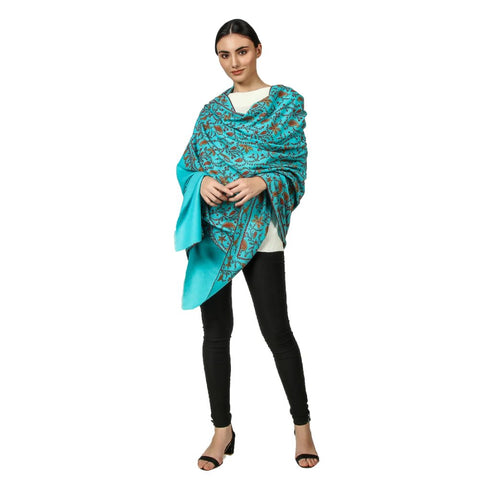
Pashmina Shawls are a versatile accessory that can be styled in various ways. Here are some tips on how to wear and style Pashmina Shawls:
A. How to wear Pashmina Shawls
-
Draping styles: Pashmina Shawls can be draped over the shoulders, wrapped around the neck, or draped over the head to create different looks.
-
Knotting styles: Pashmina Shawls can be knotted in various ways, such as the classic loop knot or the twisted knot, to create a different look.
-
Wrapping styles: Pashmina Shawls can be wrapped around the body, creating a poncho-like effect, or used as a belt to cinch the waist.
B. Choosing the right Pashmina Shawl
-
Color coordination: Choose a Pashmina Shawl that complements the color of your outfit. If you're wearing a bright outfit, opt for a neutral-colored shawl, and if you're wearing a neutral-colored outfit, choose a bold-colored shawl to add a pop of color.
-
Fabric texture: Consider the texture of the fabric when choosing a Pashmina Shawl. A soft and lightweight shawl is perfect for a casual outfit, while a thicker and heavier shawl is better suited for formal wear.
-
Design and pattern: Choose a design or pattern that complements your outfit. If you're wearing a patterned outfit, choose a solid-colored shawl, and if you're wearing a solid-colored outfit, choose a patterned shawl to add some interest to your look.
C. Pairing Pashmina Shawls with different outfits
-
Formal wear: Pashmina Shawls can be worn over a formal dress or suit to add warmth and style to your outfit. Choose a shawl that complements the color of your outfit and has a more formal design or pattern.
-
Casual wear: Pashmina Shawls can be worn with jeans and a sweater for a cozy yet stylish look. Opt for a soft and lightweight shawl in a bold color or pattern.
-
Festive wear: Pashmina Shawls can be paired with traditional Indian attire, such as a saree or salwar kameez, during festive occasions. Choose a shawl with intricate embroidery or embellishments to complement the traditional attire.
In summary, Pashmina Shawls can be styled in various ways, including draping, knotting, and wrapping styles. When choosing a shawl, consider color coordination, fabric texture, and design or pattern. Pashmina Shawls can be paired with different outfits, including formal wear, casual wear, and festive wear, to add warmth and style to any look.
Also read: 4 Ways of wear embroidered Pashmina Shawl
V. Caring for Pashmina Shawls

Pashmina Shawls are delicate and require special care to maintain their quality and longevity. Here are some tips on how to care for your Pashmina Shawls:
A. Washing and drying Pashmina Shawls
-
Hand washing: It is recommended to hand wash Pashmina Shawls using mild detergent and cool water. Do not use hot water or bleach as it can damage the fabric.
-
Drying: Gently squeeze out the excess water from the shawl and lay it flat on a clean towel to air dry. Avoid hanging or wringing the shawl as it can cause stretching and damage to the fabric.
B. Storing Pashmina Shawls
-
Folding: Fold Pashmina Shawls neatly and store them in a dry and cool place, away from direct sunlight.
-
Avoid hanging: Avoid hanging Pashmina Shawls as it can cause stretching and damage to the fabric.
-
Use storage bags: Use storage bags to protect Pashmina Shawls from dust and moisture.
C. Tips for maintaining the quality of Pashmina Shawls
-
Avoid direct contact with perfume or makeup: Avoid direct contact with perfume or makeup as it can cause stains on the fabric.
-
Handle with care: Handle Pashmina Shawls with care, avoid pulling or tugging the fabric as it can cause stretching and damage.
-
Professional cleaning: If the shawl is heavily soiled or stained, it is recommended to take it to a professional cleaner who specializes in cleaning Pashmina Shawls.

In summary, Pashmina Shawls require special care to maintain their quality and longevity. Hand washing with mild detergent and cool water is recommended, and the shawl should be air-dried flat on a clean towel. Pashmina Shawls should be stored in a dry and cool place, away from direct sunlight, and storage bags can be used to protect the shawl from dust and moisture. Avoid direct contact with perfume or makeup and handle the shawl with care to prevent stretching and damage to the fabric. If the shawl is heavily soiled or stained, it is best to take it to a professional cleaner who specializes in cleaning Pashmina Shawls.
Also read: Maximizing the life of your Cashmere Scarf
VI. Conclusion
Pashmina Shawls have been around for centuries and continue to be an important fashion accessory in the present day. They are versatile and can be worn on various occasions, from formal events to casual outings and festive celebrations. The process of making Pashmina Shawls is intricate and time-consuming, which adds to their value and cost.
In conclusion, Pashmina Shawls are an important fashion accessory that should be a part of every wardrobe. They are versatile, stylish, and add a touch of elegance to any outfit. Taking proper care of Pashmina Shawls can help maintain their quality and longevity, making them a worthwhile investment. So why not add a Pashmina Shawl to your collection and experience the luxury and beauty that it brings to your wardrobe?

